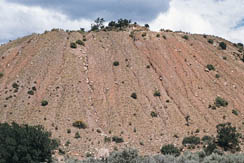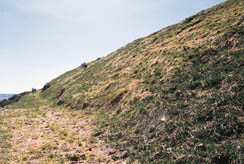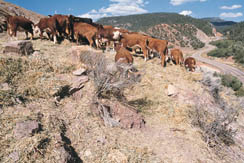|
|
|
| Subscriptions click here for 20% off! | E-Mail: info@rangemagazine.com |
|
Direct marketing of environmental value will enable people to spend their money on green and growing grass instead of on litigation, on endangered species instead of political campaigns, on collaboration and community instead of confrontation and conflict, and it will do so in a way leveraged by the creativity and hard work of some of our society’s most effective land stewards. By Dan Dagget |
|||||||
| A lot of ranchers are looking for new ways to market environmental
stewardship. Many of them already do so in a variety of ways.
They piggyback it onto beef sales by warranting that their beef
is produced in a way that doesn’t harm the environment.They market
the additional wildlife that their stewardship produces to wildlife
watchers, photographers, and to hunters where state laws permit.
Some market the open space their ranches produce by selling conservation easements or trophy homesites placed so they can continue to graze cattle on the main part of the ranch. A growing number of ranchers have even begun to seek grants to fund management projects directed at making the land healthier or at creating some specific environmental value such as habitat for an endangered species. In spite of all this creative marketing the majority of instances in which rural stewards have created environmental value–including just keeping the ranch in ranching and out of development–their efforts have been funded partially or wholly by money earned from the production of agricultural commodities whose prices are trending down. Some ranchers have been able to fund their stewardship by marketing their beef or other products as environmentally friendly; however, in a price-driven marketplace, these niche markets seem to be proving too limited to support the full scope of the demand for environmental restoration and sustainable stewardship. One measure of this shortfall is the fact that agricultural land in the West, including ranch land, is being converted to development at a rate that has been estimated at an acre a minute. Ranchers thus find themselves in the extremely odd situation of being able to produce a type of value most in demand by contemporary society–environmental value–but going out of business because there’s no effective way to market that value. |
|||||||
 |
|||||||
 |
|||||||
| EcoResults, sponsored on this project by Teva Sandals, teamed up with the Quivira Coalition, Terry Wheeler’s Arizona Ranch Management, and rancher Aparcio Gurulé whose cows turned this eroding copper mine near Cuba, N.M. into a green, growing grassland. FROM TOP: What the site looked like before the project; after the project; and the instruments of change. © Courtney White, Quivira Coalition | |||||||
 |
|||||||
|
This is beginning to change. The environmentally concerned public
has realized that ranchers can produce one product that they want
very badly. That product is open space. And they have come up
with a means to support the ranchers willing to agree to keep
their lands in open space. That means of support, of course, is
conservation easements. Whatever you think of conservation easements,
they form an example of a direct production and consumption relationship
between ranching and the environmentally concerned public. Dan Dagget is making his ideas a reality at an internet website named EcoResults.org. The not-for-profit corporation received its first grant from The Collective Heritage Institute in Santa Fe, signed up its first sponsor (Teva Sports Sandals), and added a 1998 Emmy-award winning director–Susan Green–to a team that already includes Dagget, Pulitzer-prize nominated author of "Beyond the Rangeland Conflict, Toward a West that Works,” Norm Lowe, award-winning range scientist, and Gail Lowe, Flagstaff CPA. For more information on EcoResults, go to <www.EcoResults.org>. |
|||||||
